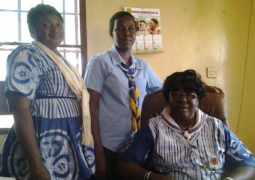The Ministry of Trade, Regional Integration and Employment, in collaboration with the International Trade Centre (ITC), recently launched sector competitiveness and export diversification project, at the Coco Ocean Hotel.
The objective of the launching, according to officials, is to kick-start the implementation of the project as well as use the opportunity to sensitize key stakeholders and beneficiaries on the expected outcome of the project.
The project targets agric-sector specific support for cashew nuts, groundnuts and sesame.
Kebba S. Touray, Minister of Trade, Regional Integration and Employment, said Diagnostic Trade Integration Study (DTIS) was conducted on the request of the Gambia government to World Trade Organization.
The study aimed at building foundation for accelerated growth through enhancing the integration of the Gambian economy into regional and global markets.
This project, he said, was conceived under the EIF tier 2, in response to the funding of DTIS to address supply side constraints to support The Gambia’s integration into the global trading system.
According to him, the development of the project went through an initial process with the ITC which gave birth to the project linking agriculture, trade information and tourism.
The integrated approach aimed at reducing poverty through strengthening competitiveness of targeted sectors to increase capacity to generate new business opportunities, income and employment.
He added: “Our challenge now is to successfully implement the project and to realize its goals and overall objectives and this can only be achieved through teamwork and commitment by all stakeholders.”
Ms Ada Gaye, permanent secretary, Ministry of Agriculture, said the intervention of the project is timely in recognizing the continued efforts at trying to reduce dependency on groundnut.
Some of the attributes resulting in the need for diversification are the continuous decline in groundnut exports since 1980s due to combination of low world prices, inconsistent sector management and work capacities of producers among others.
Despite the vulnerability, groundnut still remains the country’s main cash crop engaging directly or indirectly over 80% of the population.
This project considers that with improved organization and focused intervention, groundnut output could be restored to previous heights, and this should be accompanied complementary measures to strengthening quality control, research and marketing, revitalised producer organization and regulatory framework.
For his part, Momodou Joof, permanent secretary at the Ministry of Tourism and Culture, said tourism is the largest foreign exchange earner besides agriculture.
“Our common and shared goals is to ensure that tourism contribute to generating income for the poor and enhancing socio-economic development of the country, adding that tier 1funds were dedicated to the development of tourism marketing strategy as well as support for Gambia is Good programme and Association of Small Scale Enterprise in tourism enabling to expand their operation and increase linkages with the tourism sector.”
Mr Frederick, a representative from the ITC, said joint technical cooperation agency of UN and WTO is mandated to help developing and transition countries achieve sustainable human development through exports.
He said the ITC has been working with governments’ trade support institutions and SME exporters in developing countries to provide targeted trade-related technical assistant to help countries achieve long-term and sustainable export impact resulting in high incomes, employment and reduce poverty.
He also said the ITC is aware of the need to be consistent with goals outlined by the agriculture and national resources policy and Gambia National Agricultural Investment Programme, which provides the basis for the development of the national and regional programme to overcome the interdependent challenges that constrain the development of agriculture in The Gambia.



